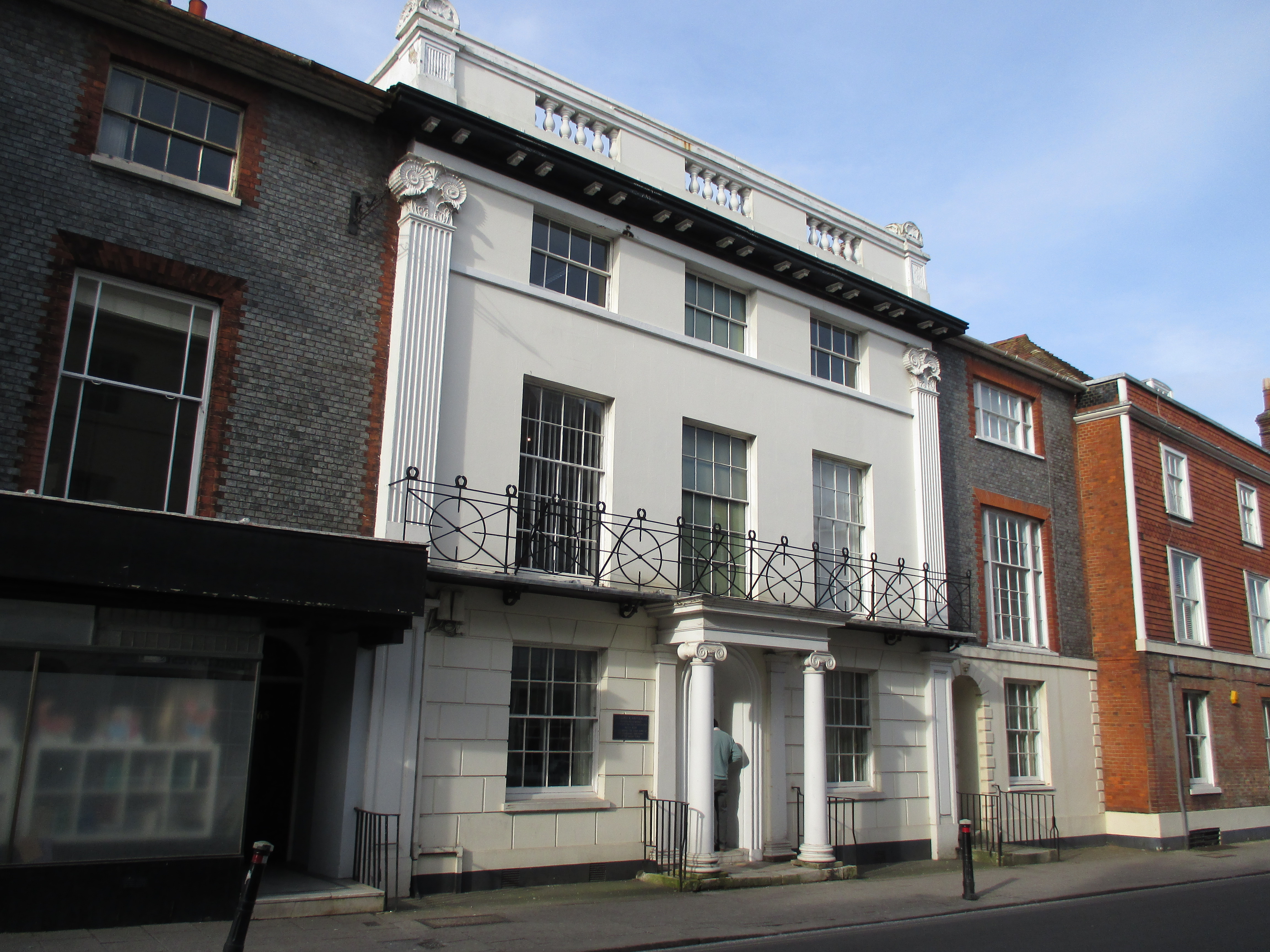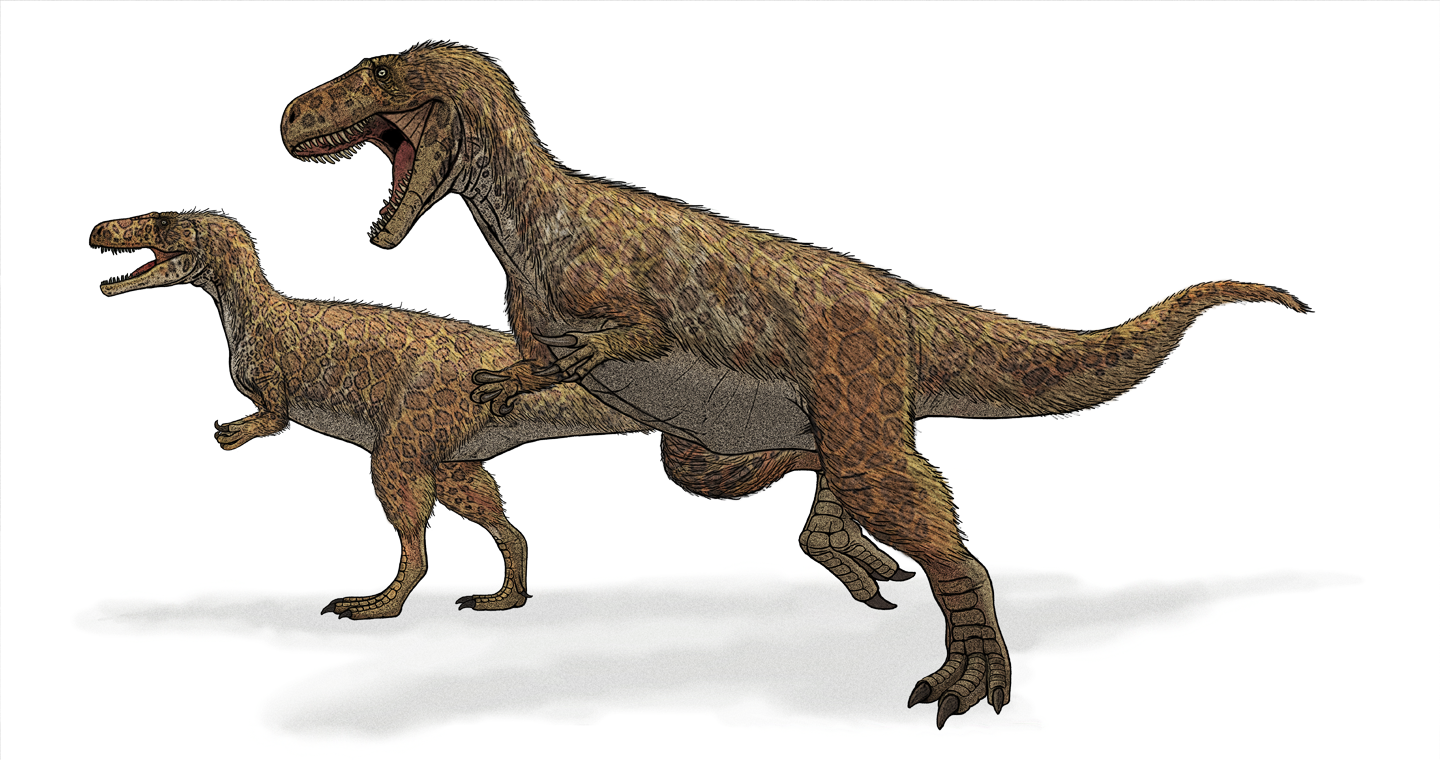|
1822 In Paleontology
Dinosaurs * James Parkinson (after whom the disease is named) publishes a general text on paleontology wherein he illustrates and describes teeth belonging to '' Megalosaurus''. Because his reference to this name in print was earlier to William Buckland's formal description of the genus, some people have concluded that Parkinson was the one who invented the name. This is a misconception: Buckland truly deserves credit for the name '' Megalosaurus'' and Parkinson got the name from him. * According to an oft-repeated story, while her husband is treating a patient, Mary Ann Mantell amuses herself by rummaging through a pile of stone rubble and discovers the first fossil of what would later be named '' Iguanodon''. This tooth intrigues her husband, who ascertains the quarry they were excavated from and returns there to successfully discover more fossils belonging to the species. However, some have questioned the authenticity of this story. * In May, Mantell publishes a book called ' ... [...More Info...] [...Related Items...] OR: [Wikipedia] [Google] [Baidu] |
James Parkinson
James Parkinson (11 April 175521 December 1824) was an English surgeon, apothecary, geologist, palaeontologist and political activist. He is best known for his 1817 work ''An Essay on the Shaking Palsy'', in which he was the first to describe "paralysis agitans", a condition that would later be renamed Parkinson's disease by Jean-Martin Charcot. Early life James Parkinson was born April 11, 1755 in Shoreditch, London, England. He was the son of John Parkinson, an apothecary and surgeon practising in Hoxton Square in London, and the oldest of five siblings, including his brother William and his sister Mary Sedgwick. In 1784 Parkinson was approved by the City of London Corporation as a surgeon. On 21 May 1783, he married Mary Dale, with whom he subsequently had eight children; two did not survive past childhood. Soon after he was married, Parkinson succeeded his father in his practice in 1 Hoxton Square. Politics In addition to his flourishing medical practice, Parkinson had a ... [...More Info...] [...Related Items...] OR: [Wikipedia] [Google] [Baidu] |
Parkinson's Disease
Parkinson's disease (PD), or simply Parkinson's, is a long-term degenerative disorder of the central nervous system that mainly affects the motor system. The symptoms usually emerge slowly, and as the disease worsens, non-motor symptoms become more common. The most obvious early symptoms are tremor, rigidity, slowness of movement, and difficulty with walking. Cognitive and behavioral problems may also occur with depression, anxiety, and apathy occurring in many people with PD. Parkinson's disease dementia becomes common in the advanced stages of the disease. Those with Parkinson's can also have problems with their sleep and sensory systems. The motor symptoms of the disease result from the death of cells in the substantia nigra, a region of the midbrain, leading to a dopamine deficit. The cause of this cell death is poorly understood, but involves the build-up of misfolded proteins into Lewy bodies in the neurons. Collectively, the main motor symptoms are also known as ... [...More Info...] [...Related Items...] OR: [Wikipedia] [Google] [Baidu] |
Megalosaurus
''Megalosaurus'' (meaning "great lizard", from Greek , ', meaning 'big', 'tall' or 'great' and , ', meaning 'lizard') is an extinct genus of large carnivorous theropod dinosaurs of the Middle Jurassic period (Bathonian stage, 166 million years ago) of Southern England. Although fossils from other areas have been assigned to the genus, the only certain remains of ''Megalosaurus'' come from Oxfordshire and date to the late Middle Jurassic. ''Megalosaurus'' was, in 1824, the first genus of non-avian dinosaur to be validly named. The type species is ''Megalosaurus bucklandii'', named in 1827. In 1842, ''Megalosaurus'' was one of three genera on which Richard Owen based his Dinosauria. On Owen's directions a model was made as one of the Crystal Palace Dinosaurs, which greatly increased the public interest for prehistoric reptiles. Over fifty other species would eventually be classified under the genus; at first, this was because so few types of dinosaur had been identified, but the p ... [...More Info...] [...Related Items...] OR: [Wikipedia] [Google] [Baidu] |
William Buckland
William Buckland Doctor of Divinity, DD, Royal Society, FRS (12 March 1784 – 14 August 1856) was an English theologian who became Dean of Westminster. He was also a geologist and paleontology, palaeontologist. Buckland wrote the first full account of a fossil dinosaur, which he named ''Megalosaurus''. His work proved that Kirkdale Cave in North Yorkshire had been a prehistoric hyena den, for which he was awarded the Copley Medal. It was praised as an example of how scientific analysis could reconstruct distant events. He pioneered the use of fossilised Feces, faeces in reconstructing ecosystems, coining the term coprolites. Buckland followed the Gap creationism, Gap Theory in interpreting the biblical account of ''Genesis'' as two widely separated episodes of creation. It had emerged as a way to reconcile the scriptural account with discoveries in geology suggesting the earth was very old. Early in his career Buckland believed he had found evidence of the Deluge myth, biblic ... [...More Info...] [...Related Items...] OR: [Wikipedia] [Google] [Baidu] |
Gideon Algernon Mantell
Gideon Algernon Mantell MRCS FRS (3 February 1790 – 10 November 1852) was a British obstetrician, geologist and palaeontologist. His attempts to reconstruct the structure and life of ''Iguanodon'' began the scientific study of dinosaurs: in 1822 he was responsible for the discovery (and the eventual identification) of the first fossil teeth, and later much of the skeleton, of ''Iguanodon''. Mantell's work on the Cretaceous of southern England was also important. Early life and medical career Mantell was born in Lewes, Sussex as the fifth-born child of Thomas Mantell, a shoemaker, and Sarah Austen. He was raised in a small cottage in St. Mary's Lane with his two sisters and four brothers. As a youth, he showed a particular interest in the field of geology. He explored pits and quarries in the surrounding areas, discovering ammonites, shells of sea urchins, fish bones, coral, and worn-out remains of dead animals. The Mantell children could not study at local grammar schools ... [...More Info...] [...Related Items...] OR: [Wikipedia] [Google] [Baidu] |
Mary Ann Mantell
Mary Ann Mantell ('' née'' Woodhouse; 9 April 1795 – 20 October 1869) was a British fossil collector and the wife of the British paleontologist Gideon Mantell. She is credited – although this is disputed – with the discovery of the first fossils of ''Iguanodon'' and provided several pen and ink sketches of the fossils for her husband's scientific description of the ''Iguanodon''. ''Iguanodon'' discovery Per the Mantells' account, it was Mary Ann who discovered the fossils which were later identified as belonging to Iguanodon; Gideon Mantell "at first endorsed but recanted" this story after their divorce; "doubt has been poured on the somewhat romanticized claim both on her involvement and the date ... with the suggestion that the Mantells probably bought the first teeth off local quarrymen." Per the Mantells' original story, in 1822, while Mary Ann Mantell was accompanying her husband in Sussex as he was visiting a patient, she discovered tooth-shaped fossils on the side o ... [...More Info...] [...Related Items...] OR: [Wikipedia] [Google] [Baidu] |
Iguanodon
''Iguanodon'' ( ; meaning 'iguana-tooth'), named in 1825, is a genus of iguanodontian dinosaur. While many species have been classified in the genus ''Iguanodon'', dating from the late Jurassic Period to the early Cretaceous Period of Asia, Europe, and North America, taxonomic revision in the early 21st century has defined ''Iguanodon'' to be based on one well-substantiated species: ''I. bernissartensis'', which lived from the late Barremian to the earliest Aptian ages ( Early Cretaceous) in Belgium, Germany, England, Spain, and possibly elsewhere in Europe, between about 126 and 122 million years ago. ''Iguanodon'' was a large, bulky herbivore, measuring up to in length and in body mass. Distinctive features include large thumb spikes, which were possibly used for defense against predators, combined with long prehensile fifth fingers able to forage for food. The genus was named in 1825 by English geologist Gideon Mantell but discovered by William Harding Bensted, bas ... [...More Info...] [...Related Items...] OR: [Wikipedia] [Google] [Baidu] |
1825 In Paleontology
Dinosaurs Newly named dinosaurs Data courtesy of George Olshevsky's dinosaur genera list. Newly named birds References {{Portal, Paleontology 1820s in paleontology Paleontology ... [...More Info...] [...Related Items...] OR: [Wikipedia] [Google] [Baidu] |
Sandown Bay
Sandown Bay is a broad open bay which stretches for much of the length of the Isle of Wight's southeastern coast. It extends from Culver Down, near Yaverland in the northeast of the Island, to just south of Shanklin, near the village of Luccombe in the southwest. At Luccombe, the bay is separated from The Undercliff by a large headland from which Upper Ventnor sits atop. The towns of Shanklin, Lake and Sandown are on the bay's coast, while Luccombe and Upper Ventnor feature panoramic views across both Sandown Bay to the East and the Undercliff to the southwest. Due to the bay being relatively sheltered from offshore winds it is often used as temporary anchorage point for boats, including large cargo ships, before continuing east towards Continental Europe, or north towards The Solent. History In the past, the bay had significant military importance as the wide beach offered a good landing-point for an armed invasion of the Island. To protect against a French or Spanish inv ... [...More Info...] [...Related Items...] OR: [Wikipedia] [Google] [Baidu] |
Isle Of Wight
The Isle of Wight ( ) is a county in the English Channel, off the coast of Hampshire, from which it is separated by the Solent. It is the largest and second-most populous island of England. Referred to as 'The Island' by residents, the Isle of Wight has resorts that have been popular holiday destinations since Victorian times. It is known for its mild climate, coastal scenery, and verdant landscape of fields, downland and chines. The island is historically part of Hampshire, and is designated a UNESCO Biosphere Reserve. The island has been home to the poets Algernon Charles Swinburne and Alfred, Lord Tennyson. Queen Victoria built her summer residence and final home, Osborne House at East Cowes, on the Isle. It has a maritime and industrial tradition of boat-building, sail-making, the manufacture of flying boats, hovercraft, and Britain's space rockets. The island hosts annual music festivals, including the Isle of Wight Festival, which in 1970 was the largest rock music ... [...More Info...] [...Related Items...] OR: [Wikipedia] [Google] [Baidu] |
Cetacean
Cetacea (; , ) is an infraorder of aquatic mammals that includes whales, dolphins, and porpoises. Key characteristics are their fully aquatic lifestyle, streamlined body shape, often large size and exclusively carnivorous diet. They propel themselves through the water with powerful up-and-down movement of their tail which ends in a paddle-like fluke, using their flipper-shaped forelimbs to maneuver. While the majority of cetaceans live in marine environments, a small number exclusively reside in brackish water or fresh water. Having a cosmopolitan distribution, they can be found in some rivers and all of Earth's oceans, and many species inhabit vast ranges where they migrate with the changing of the seasons. Cetaceans are famous for their high intelligence and complex social behaviour as well as for the enormous size of some of the group's members, such as the blue whale which reaches a maximum confirmed length of 29.9 meters (98 feet) and a weight of 173 tonnes (190 short tons ... [...More Info...] [...Related Items...] OR: [Wikipedia] [Google] [Baidu] |
1824 In Paleontology
Dinosaurs * William Buckland realizes that fossils he previously believed to be of cetacean Cetacea (; , ) is an infraorder of aquatic mammals that includes whales, dolphins, and porpoises. Key characteristics are their fully aquatic lifestyle, streamlined body shape, often large size and exclusively carnivorous diet. They propel them ... origin were actually '' Iguanodon'' fossils. This mistake cost him the chance to describe the genus himself. Newly named dinosaurs Plesiosaurs New taxa References {{Reflist 1820s in paleontology Paleontology ... [...More Info...] [...Related Items...] OR: [Wikipedia] [Google] [Baidu] |









